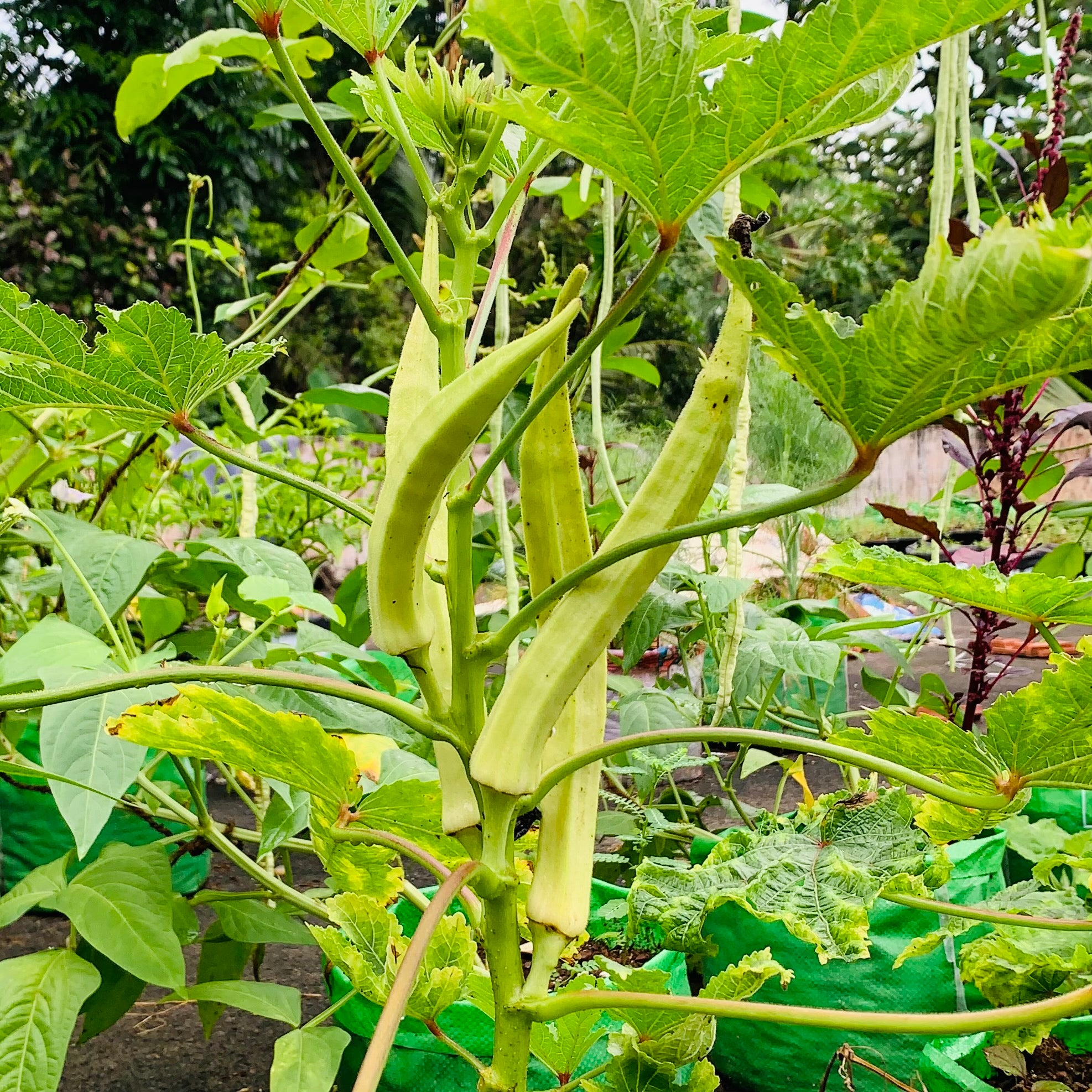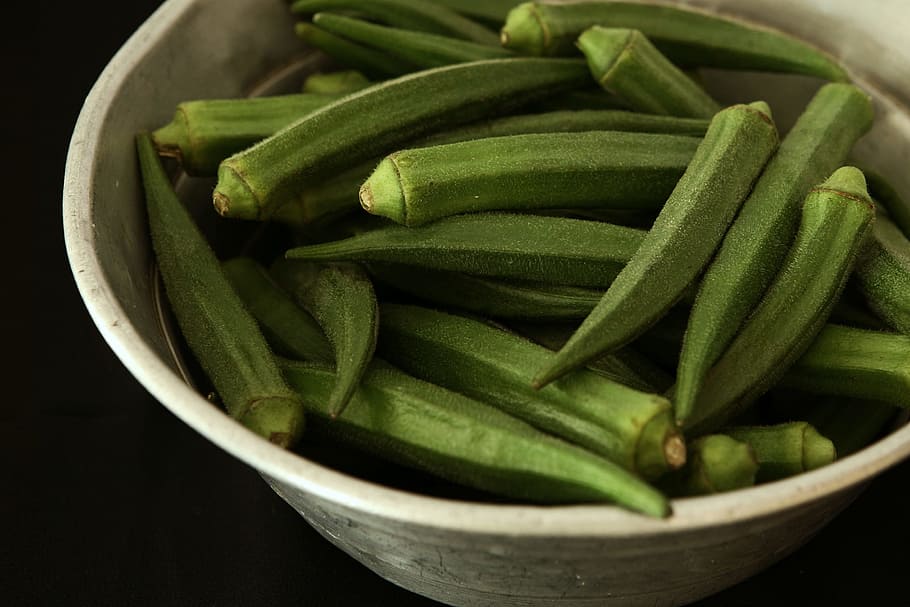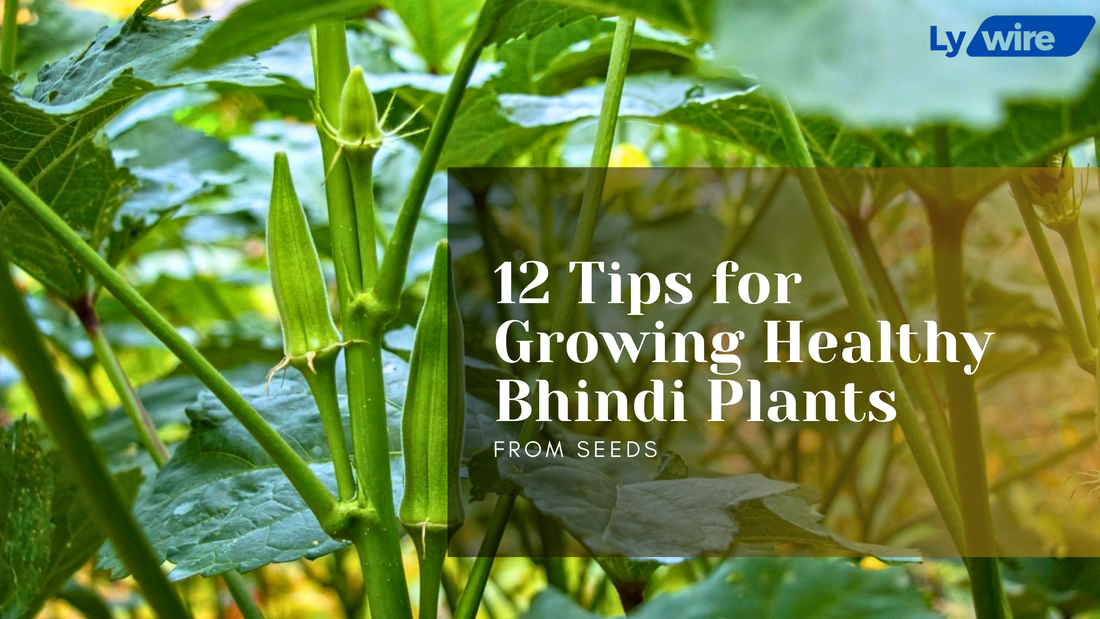
Bhindi, also known as okra or ladyfinger, is a popular vegetable in Indian and global cuisines. Its versatility and nutritional value make it a favorite in many households. Growing bhindi at home is not only rewarding but also ensures a fresh and organic supply. Here are 12 essential tips to grow healthy Bhindi plants from seeds.
1. Choose the Right Seeds
Selecting high-quality seeds is the first step toward a successful harvest. Opt for seeds from trusted nurseries or online stores with good reviews. Fresh seeds have higher germination rates and yield better results.
2. Soak Seeds for Faster Germination
Soaking the seeds in water for 10-12 hours before planting softens their outer shell, speeding up germination. For an even quicker process, you can wrap the seeds in a moist tissue for 24-48 hours until small shoots appear.

3. Prepare Nutrient-Rich Soil
Bhindi thrives in well-drained, nutrient-rich soil. Mix garden soil with organic compost or cocopeat in a 60:40 ratio to ensure the plant receives adequate nutrients and moisture retention. The soil should be slightly loose to allow proper root growth.
4. Use the Right Container or Garden Space
If growing bhindi in pots, ensure they are at least 15-20 inches deep with proper drainage holes. For garden planting, maintain rows at least 3 feet apart to provide ample space for the plants to bush out.
5. Sow Seeds at the Correct Depth
Plant bhindi seeds about 1 inch deep into the soil. If using pots, space each seed around 5 inches apart to prevent overcrowding. In garden beds, maintain a spacing of 12-18 inches between plants.

6. Provide Ample Sunlight
Bhindi is a sun-loving plant that requires at least 5-8 hours of direct sunlight daily. Place your pots or garden beds in a sunny spot to ensure healthy growth and prevent stunted development.
7. Water Regularly but Avoid Overwatering
Keep the soil consistently moist during germination and early growth stages, but avoid waterlogging as it can lead to root rot. Once the plant matures, water it deeply every few days depending on weather conditions.
8. Fertilize Regularly
Bhindi is a heavy feeder and benefits from regular fertilization. Use an NPK (Nitrogen, Phosphorus, Potassium) fertilizer every 4-6 weeks during its growing season. Additionally, top-dress the soil with compost every two weeks to replenish nutrients.

9. Protect Against Pests
Common pests like aphids and mealybugs can harm bhindi plants. Use organic pest control methods like neem oil sprays or insecticidal soap to keep pests at bay. Regularly inspect plants for signs of infestation and remove infected parts promptly.
10. Prune and Thin Out Seedlings
Once seedlings sprout, thin them out by removing weaker plants to allow stronger ones more room to grow. Pruning helps improve air circulation and prevents diseases caused by overcrowding.
11. Harvest at the Right Time
Harvesting at the right stage ensures tender and flavorful bhindi pods. Pick them when they are about 4-5 inches long (approximately palm-sized). Overripe pods become fibrous and lose their taste.
12. Save Seeds for Future Planting
To save seeds for future planting, let some pods mature fully on the plant until they dry out and crack open naturally. Collect the seeds, dry them in sunlight for a few days, and store them in an airtight container for future use.
Additional Tips for Success
- Climate Considerations: Bhindi thrives in warm climates with temperatures above 65°F (18°C). Avoid planting during frost-prone seasons.
- Companion Planting: Grow bhindi alongside plants like tomatoes or peppers to maximize garden space.
- Mulching: Add a layer of mulch around the base of the plant to retain soil moisture and regulate temperature.
Growing bhindi from seeds is an enjoyable gardening activity that rewards you with fresh produce right at home. By following these tips diligently, you can ensure a bountiful harvest of healthy and delicious okra!

